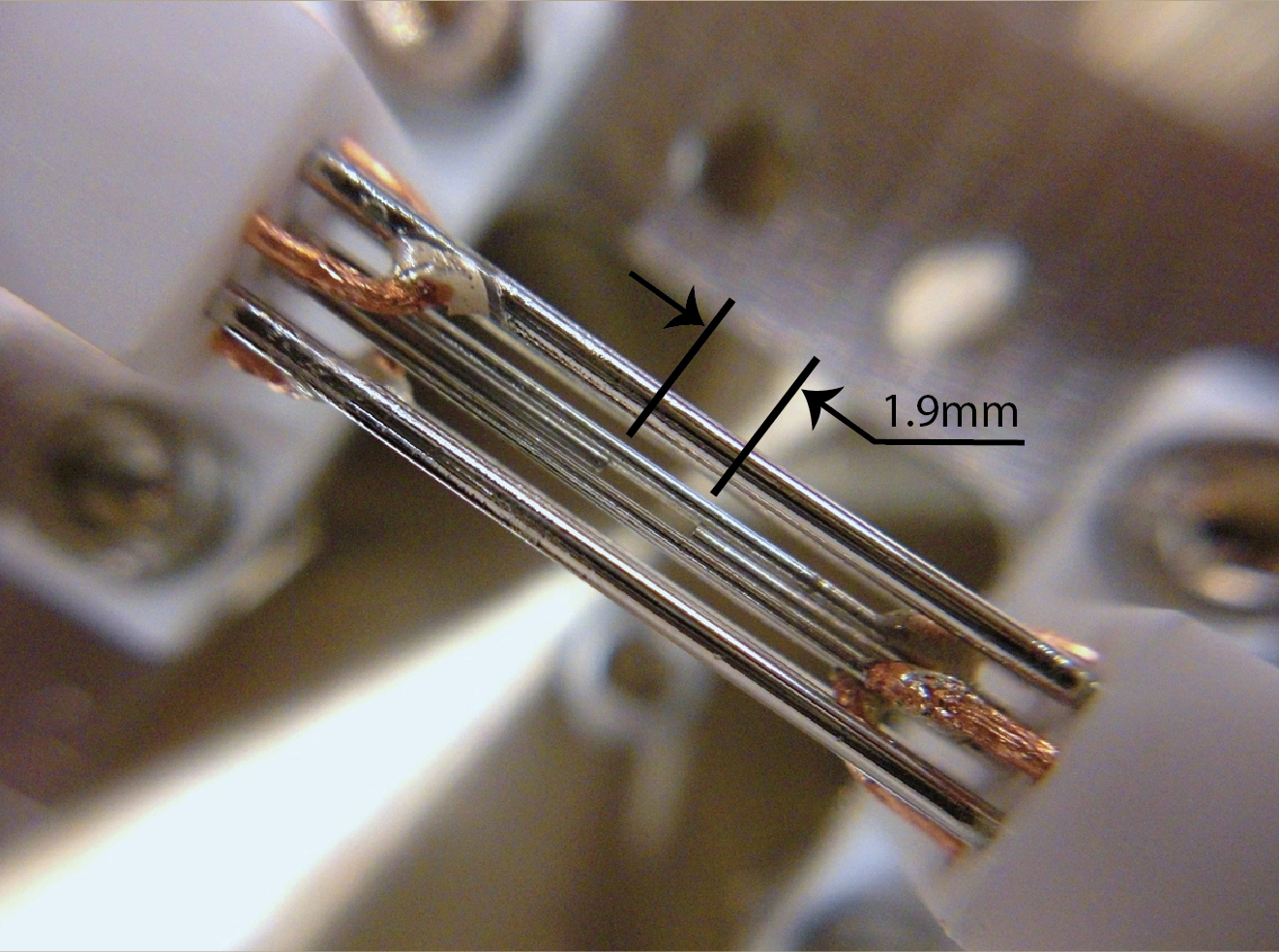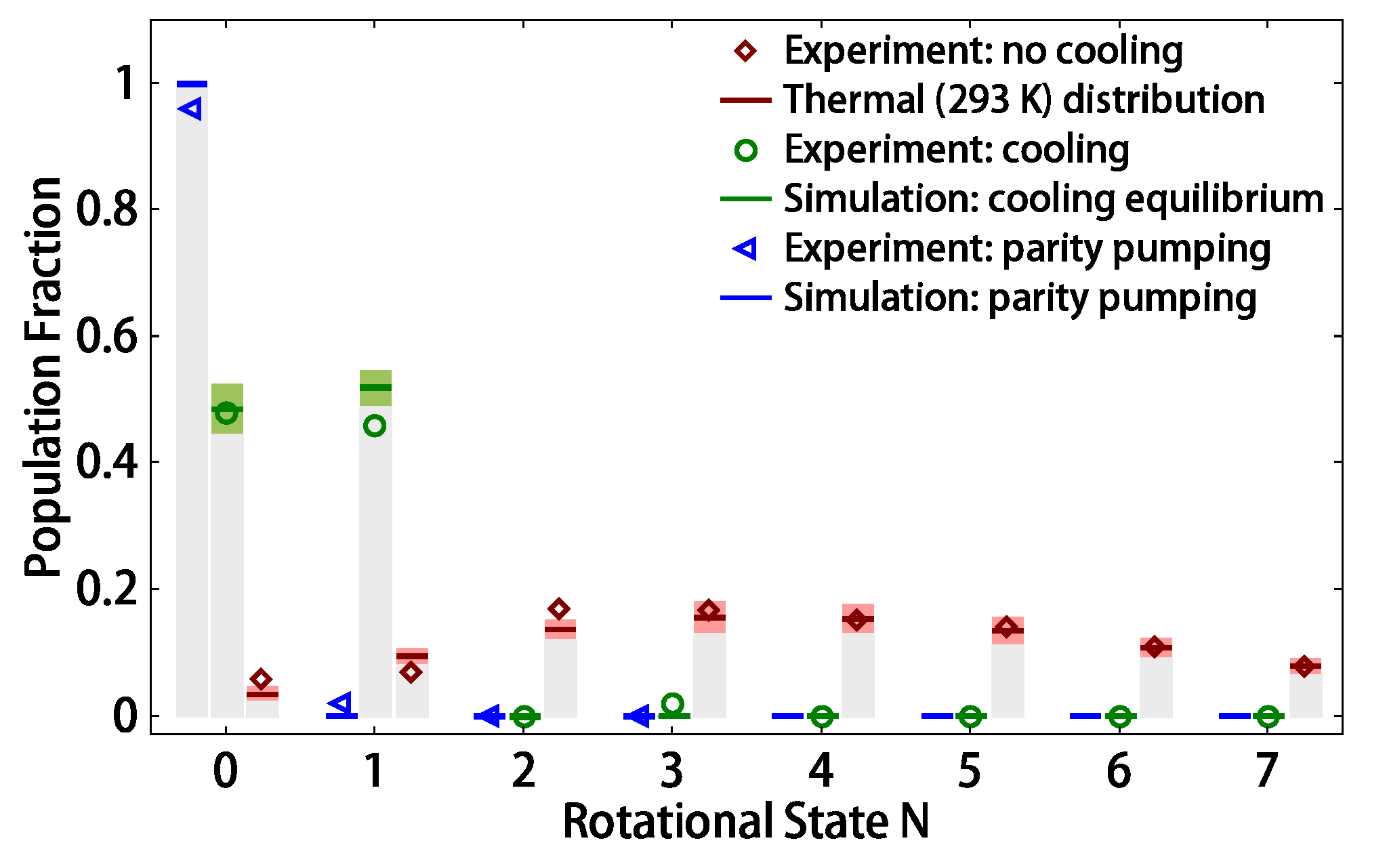current work
Doped Cryogenic Crystals for Fundamental Physics
 |
Chemists for decades have performed spectroscopy on reactive molecules imbedded in frozen host matrices made of inert atoms. Now physicists are wondering if this method of “trapping” might be improved sufficiently to study molecules better than can be done in beams or electromagnetic traps. The advantage would be that we could study many orders of magnitude more molecules per experimental cycle, thereby greatly enhancing our sensitivity to physics beyond the Standard Model. Possibilities include searching for an electric dipole moment of the electron and searching for dark matter. Our current effort is to develop a technique for growing single-crystal samples in a manner compatible with doping them. The goal is for each dopant atom or molecule to see precisely the same local environment. Our analysis includes both x-ray and optical techniques. |
previous work
Trapped Molecular Quantum Control
 |
Trapping molecular ions is easy. Cooling their kinetic energy to milliKelvin temperatures is also easy, by Doppler cooling of co-trapped atomic ions. Much more challenging is preparing the trapped molecular ions into well-defined quantum states and reading out the states non-destructively. Our group demonstrated a technique to optically pump "alkali-like" molecular ions into their ground quantum state as well as specifically chosen excited states. We made the first demonstration that chemical reaction rates could depend on rotational energy. We explored various non-destructive state readout techniques. And we explored the potential for trapped molecular ions to be used for a precision search for time-varying fundamental constants. |
Home | Current Members | Alumni | Publications | Motivation | Current Work | Outreach | Contact

